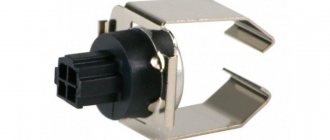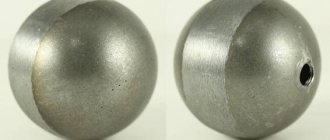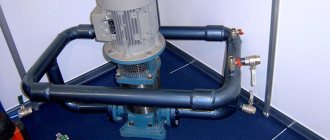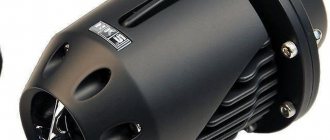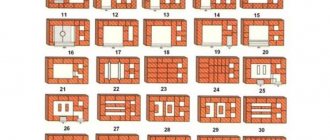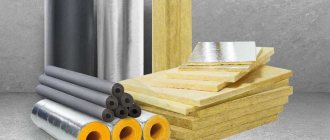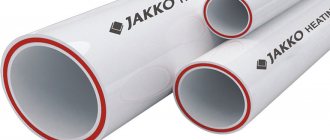Thermocouples (TC) function in many thermal processes as primary temperature sensors of an automatic safety and control system. At household heat power facilities, they are installed to protect burners from flame separation on gas boilers, water heaters and stoves, for cooking.
They operate in the high-temperature zone of the gas torch, and therefore may fail. At the same time, the automatic safety system instantly turns off gas-using equipment. In order to ensure trouble-free and long-term operation of gas stoves, water heaters and boilers, it is necessary to exclude false triggering of the protection, and you also need to know how to test a thermocouple with a multimeter. This can be done at home without any problems.
What is a thermocouple
A thermocouple is a device consisting of soldered dissimilar conductors or semiconductors that form a single electrical circuit. TC works on the basis of the thermoelectric effect known as the “Seebeck effect”.
An effect when two dissimilar metals welded together at a certain temperature generate a voltage proportional to the resulting thermal energy. The higher the temperature difference at the junction point, the more the thermocouple produces E.M.F.
Design
The operating efficiency and high accuracy of operation of this primary temperature sensor is based on a simple principle.
Its operation is ensured by the following basic design elements:
- A thermocouple junction made of 2 dissimilar conductors. Sometimes semiconductors can be installed instead of conductors.
- Insulated conductors that make up the circuit from the soldering point to the point where the signal is output to external current collectors.
- Shielding protective coating is a metal tube that covers the circuit wires from exposure to open fire in a gas torch.
Important! The composition of the junction can include both non-ferrous and noble metals. Depending on this, thermocouples are grouped into several modifications, the characteristics of which are presented below.
Advantages and disadvantages of using thermocouples
The advantages of using this device are:
- Large temperature measurement range;
- High accuracy;
- Simplicity and reliability.
The disadvantages include:
- Carrying out continuous monitoring of the cold junction, verification and calibration of control equipment;
- Structural changes in metals during the manufacture of the device;
- Dependence on the composition of the atmosphere, costs of sealing;
- Measurement error due to exposure to electromagnetic waves.
Principle of operation
The thermocouple is installed in the high temperature zone being measured. The metal alloy is heated to operating temperature. Voltage develops between cold and hot connections in a circuit. A current collector or measuring device is connected to the cold leads of the thermocouple, thereby completing the circuit. The voltage that arises in the coil of the electromagnetic type gas shut-off valve creates induction, causing it to open and allow gas to flow to the burner.
In order to start the boiler or geyser, you will first need to press the rod in manual mode. Gas will begin flowing to the burner and the piezo igniter will ignite the torch. The thermocouple will heat up within 30 seconds. When the thermocouple generates operating voltage, the solenoid valve will be held open by this voltage. After the gas stops entering the furnace or an emergency separation of the torch from the burner occurs, the thermocouple junction cools down and the supply of voltage to the gas valve stops, which closes, thereby cutting off the fuel supply to the boiler or gas water heater.
Reference. According to this principle, the safety system operates not only in domestic gas installations, but also at powerful energy plants from thermal power plants to nuclear power plants, as well as in metallurgical, chemical and other types of industries that use gas in technological processes.
principle of operation, how to check the device with a multimeter and how it works, what it is
The thermocouple for a gas boiler has a simple design, so it is quite easy to repair. A gas boiler is a complex structure that requires additional components. Particularly important in this device are the parts that control its operation and protect against overheating. One of the most important components of a gas boiler is a thermocouple. Let's figure out what it is and how to repair it yourself.
What is a thermocouple for a gas boiler
To understand how a thermocouple works, you must first determine what it is. Only in this case will you be able to change it in case of malfunction and check its operation.
The thermocouple is an element not only of a gas boiler, but also of a column. It is thanks to it that the safe operation of gas equipment is ensured.
You can find the answer to the question: “What is a thermocouple?” in special documentation. However, we offer you an explanation of the structure of this element in simple language.
What is a thermocouple:
- The thermocouple is a equipment monitoring device. It consists of two conductors of different types.
- The thermocouple conductors must be in contact with each other. Such contact is provided at one or two points of the device.
- Due to the different types of conductors in a thermocouple, when heated, they create a voltage between themselves. This voltage is taken into account during the operation of the gas boiler.
- It is thanks to the conductors and their characteristics that you do not have to use external excitation of the gas boiler. These parts can be powered autonomously.
Thus, the thermocouple is a temperature control sensor in the boiler. It has a very simple structure, which ensures its versatility.
The thermocouple for a gas boiler may differ in the length and thickness of the tube
There is only one rule regarding the choice of thermocouple. When purchasing such a device, you need to pay attention to the quality of fixation of the conductor connection points. If this parameter is not performed well, the device may produce an error of more than one degree. This is an unacceptable indicator for gas equipment.
How does a thermocouple work?
If you want to learn how to repair and troubleshoot a thermocouple, you must first understand the principle of its operation and understand how it works.
In fact, there is no great need to repair the thermocouple. This device has a very affordable price, which makes it possible to replace it frequently.
So, we have already figured out how a thermocouple works. It consists of two conductors connected at one or more points. This device looks like a thick metal wire with thickenings at the ends. The thickenings are conductors, and the wire itself consists of chromel and aluminum.
Thermocouple operating principle:
- Dissimilar metals connected to each other, or rather their junction, are heated to a certain temperature;
- Stress develops at the cold ends of these metals;
- A measuring device is connected to the ends of the conductors, and the circuit is closed;
- Due to the resulting voltage, induction occurs in the solenoid valve coil;
- Thanks to this, the shut-off valve opens and is held open.
If we explain how we see how a thermocouple works, then the principle of its operation will be as follows: we press the rod of the electromagnetic valve, opening it manually, the igniter receives a portion of gas, from which it flares up, at this time the ends of the thermocouple located above it heat up, through After half a minute, this element begins to generate voltage and the valve opens, you can release the rod.
Advantages of a thermocouple for a boiler
The thermocouple is present in all gas heating equipment. It is found in both columns and boilers. At the same time, previously this element was not used in boilers and they managed quite well without it. Why is it that now not a single gas boiler can do without this element?
The thermocouple itself is inexpensive, but the wires installed between the panel and the thermocouple are more expensive than other elements of the device.
The thermocouple gained its popularity due to the many advantages of its use. After all, only with the advent of this device, manufacturers were able to provide safe and high-quality electric ignition.
Advantages of using a thermocouple:
- Despite the fact that the thermocouple is a flame control sensor, it can also be a temperature tester;
- This element of a gas boiler is designed very simply, there are no additional parts or complex equipment, such a device makes the thermocouple cheap;
- This part can withstand a wide range of variable temperatures;
- The accuracy of the thermocouple is high, which is why it can be used in such dangerous products as gas boilers and water heaters;
- Repairing and installing a thermocouple is so simple that even an ordinary person can handle it.
Among the advantages of a thermocouple, it is worth noting its compactness and low cost.
Despite the fact that a thermocouple has many advantages, it has its disadvantages. Firstly, the relationship between heating temperature and potential growth is not linear, that is, the electric potential does not increase with increasing temperature. Secondly, the limit to potential growth is quite small. These negative qualities do not affect the operation of the equipment as a whole, but when temperatures change, the device requires high-quality calibration.
Also, the advantage of a thermocouple - simplicity and reliability - is also its disadvantage. You ask how? The fact is that if the thermocouple burns out, and this sometimes happens, it will be impossible to repair it. In this case, the thermocouple will simply have to be replaced. In addition, a gas boiler will not work without this element. However, the price of the thermocouple is quite reasonable, and its installation is quite simple.
How to check a thermocouple on a gas boiler
Unfortunately, the thermocouple fails more often than other parts of a gas boiler. In this case, all equipment simply stops working. Therefore, when a gas boiler fails, the first suspicion arises that it is the thermocouple that has burned out.
If your gas boiler fails, the first thing you need to do is check the thermocouple. It is this element that most often causes the entire equipment to stop working.
Before you go to the store for a new thermocouple, you need to check whether this is really the cause of the equipment breakdown. You can do this without calling a specialist yourself. However, as you work, you will have to take measurements with a multimeter, so make sure you have one in advance. You can buy it in a store, or call your friends and find it for free.
Checking the thermocouple for serviceability:
- Disconnect the end of the thermocouple from the solenoid valve. To do this they need to be untwisted.
- Remove the thermocouple from the boiler. Heat its end, which was located above the boiler burner, over a candle or gas burner;
- Next, you need to wait half a minute and measure the readings at the input contact using a multimeter. If they are less than 17 millivolts, then there is a malfunction in the thermocouple.
In this simple way, you can check whether the thermocouple is the cause of the gas boiler stopping. This work is simple and does not require much time. The only problem in this case is finding a multimeter.
Thermocouple repair or replacement
In most cases, repairing a failed thermocouple is impossible. The fact is that if this device burns out, then there is nothing to repair there, so we propose to consider the process of replacing it.
In most cases, any thermocouple is suitable for a wide variety of boilers. It's all about the prostate, its structure and versatility.
Replacing the thermocouple is a fairly simple job. Even a person far from such work can cope with it. Therefore, in this case, you can do without the help of a specialist.
If you do not have experience repairing thermocouples, then you should contact a professional
Steps for thermocouple stone:
- The thermocouple is installed on the gas line through a special pipe, to which the thermocouple is attached using a copper nut. To disconnect the thermocouple, you simply unscrew this nut.
- You also need to unscrew the compression screw. You will find it under the bracket.
- Now you can remove the old thermocouple.
- To install a new element, you need to tighten the nut and screw. In this case, it is necessary to check that the connection is tight. If this is not the case, then use ceramic or polymer gaskets.
As you can see, replacing a thermocouple is a very simple job. The main thing is that your actions do not damage other parts of the boiler, for example, the separator.
DIY thermocouple repair (video)
The thermocouple is a very important element of a gas boiler. And despite the fact that some of it fails, manufacturers have not yet found a better device. After all, a thermocouple has a simple structure and low price.
Add a comment
heatclass.ru
Why do you need to check thermocouples?
Any power unit will be switched off in an emergency if the temperature sensor does not work. Replacing a thermocouple is an expensive process, especially since it is not needed in all cases. To exclude false triggering of the safety automatics by the flame, it is better to check the TP. Restoring its functionality begins with a visual inspection of the thermocouple.
As a rule, it fails due to the thermal indicator burnout, which happens quite often in boilers. In this case, a black dent or even a through hole can be found on the surface of the sensor. In this case, such a meter is immediately rejected and a new one will need to be installed.
Important! In some cases, the thermocouple has no external deviations. In this case, its performance can only be checked using a multimeter.
Installation device for thermocouple welding
Attention! When repeating and operating the proposed installation for welding thermocouples, due to the lack of galvanic isolation of contacts for connecting a thermocouple, it is necessary to observe the polarity of connecting the installation to the electrical wiring. Only the neutral wire must be connected to the thermocouple. Touching a phase wire may result in electric shock.
There are several ways to weld thermocouples: in an electric arc, in a salt electric welding machine, using an acetylene torch and in graphite or carbon powder. I weld thermocouples to measure temperature using LATR and a ceramic container filled with graphite powder. The technology is simple, does not require special equipment or experience and is accessible to any home craftsman.
I inherited a homemade installation for welding thermocouples, shown in the photo. The installation is a metal box in which an LATR, an alternating voltage voltmeter and a ceramic glass for graphite powder are installed.
The electrical diagram of the installation is presented above. The supply voltage is supplied through an electrical plug from household electrical wiring through a switch and fuse for a current of 5 A to the primary winding of a laboratory autotransformer. The neon lamp HL1 serves to indicate the switched on state of the installation. Resistor R1 limits the current through HL1.
At the bottom of the ceramic bowl filled with graphite powder, there is a copper plate to supply current, to which supply voltage is supplied through a brass screw from the alternating contact of the LATR. The neutral wire coming from the power plug is connected to the common wire of the LATR and to the thermocouple being welded using an alligator clip.
The amount of welding current depends on the voltage. For this purpose, the installation has an alternating voltage voltmeter, indicated in the diagram by the letter V. The voltage value is set by rotating the LATR knob and is selected experimentally depending on the diameter of the wires being welded and lies in the range of 20-90 V. There are no special elements in the circuit that limit the amount of current. It is limited by the cross-section of the circuit wires and the resistance value of the graphite powder.
The photo shows the front panel of the thermocouple welding installation from the back side. As you can see, the LATR is fixed directly to the bottom of the box, and all other elements of the electrical circuit are fixed directly to the panel.
To weld a thermocouple on the installation, it is enough to twist the conductors, clamp them with a crocodile and smoothly touch the graphite surface. An electric arc will occur, releasing a large amount of thermal energy at one point. The conductors begin to melt, and the molten metals, mixed with each other, form a neat ball, as in the photograph, due to the forces of surface tension in the liquids.
Welding time usually does not exceed three seconds. The burning of the arc is accompanied by a characteristic hissing sound, with a decreasing frequency over time. If you have experience, you can easily determine the end of the welding process by sound. Due to the large mass of the thermocouple for the gas water heater, it took about five seconds to weld it.
Here is a photo of a chromel-alumel thermocouple made of ∅0.5 mm wires, the welding of which is demonstrated in the video above. As you can see, a neat round junction has formed at the place where the wires were welded. This thermocouple will last a long time.
On a thermocouple welding machine, I mainly have to weld chromel-copel (TCA, Type L) and chromel-alumel (TCA, Type K) thermocouples with a conductor diameter of 0.2-0.5 mm. It happened during repairs that even a K-type thermocouple with a conductor diameter of 3 mm was welded. Copper and aluminum wires with a diameter of up to 2.5 mm are well welded together. But when installing electrical wiring, it is difficult to use the installation for welding connections due to its overall dimensions.
To protect the eyes from bright light when visually monitoring the welding process, it is inconvenient to use glasses or a welder’s protective mask, so I use a high-density neutral density filter from the camera.
As practice has shown, with the help of a simple installation, which is an LATR and a ceramic bowl with graphite powder, you can successfully repair thermocouples used in gas water heater automation systems at home with your own hands.
Which device to choose for measurement
To perform thermocouple testing, the simplest multimeter, which is usually available in the arsenal of a home craftsman, is suitable. If you need to buy a new one, it is better to take a model capable of solving many problems, including measuring temperatures.
You also need to pay attention to the fact that the multimeter, in addition to standard measurements of voltage, resistance and conductivity of electrical circuits, has the following functions:
- “HOLD” – function of fixing measurement results on the display;
- “REL” is a function that performs a measurement relative to a base value;
- ●))) - function for testing electrical circuits with an audible signal.
Important! The multimeter must be safe to use. Data on its electrical safety are indicated in the manufacturer's instructions and applied to the device body. To test a thermocouple, CAT II / III class instruments are sufficient, corresponding to electrical safety for in-house distribution networks and local power networks.
You can also check the thermocouple with an avometer - this is a device of a combined operating principle. Mainly measures constant current, resistance and voltage characteristics. In essence, the name “avometer” is collected from the names of 3 devices that are traditionally used to measure the noted parameters: ammeter, voltmeter, ohmmeter.
How temperature is measured with a multimeter, how to check a temperature sensor with a tester
Multimeters are universal instruments for measuring various indicators of electrical equipment. Most often they are used for work by electricians, but sometimes they are used to measure temperature. This is possible if the device has the appropriate functions, or if it is possible to attach a microcircuit to it.
Basic moments
A multimeter is used as a thermometer if it is necessary to measure temperature in difficult conditions - an open flame, toxic substances, difficult access to an object, an object that is too hot.
Many multimeters have a built-in temperature measurement function. In this case, using the device is not difficult, since you do not have to make any changes to its design, you just need to figure out which mode to choose. Usually this mode is marked with the letters “temp”, and the multimeter comes with a thermocouple, which is a wire with a sensor. There are two sockets on the housing to connect a thermocouple.
Most testers are capable of working with temperatures ranging from -40 to 1000 degrees Celsius. If you have purchased an inexpensive multimeter, you should pay attention to which thermocouple is included. The fact is that most multimeters have fairly thin wires that can melt when exposed to temperatures above 250 °C. It is also necessary to pay attention to whether it is possible to measure the temperature of liquids or only gases.
If you are going to work with high temperatures, then it is better to replace the standard thermocouple with a special one, the design of which is designed for measurements in more difficult conditions.
For some devices, you will need to use a special adapter, since multimeters have single inputs, and a professional thermocouple has a miniature plug. After connecting the thermocouple, you must select the temperature measurement mode: it can be in degrees Celsius or Fahrenheit.
In order to find out what the temperature is, you need to touch the tip of the thermocouple to the object of interest. The data will immediately appear on the electronic display.
The duration of contact with the object is only 2-3 seconds; for accurate measurements, the contact must be tight. You can check if your multimeter is working correctly by comparing its readings with those of a thermometer. It is also important to monitor the polarity of the thermocouple connection.
No special mode
Is it possible to measure temperature with a multimeter that does not have a special mode for this? It turns out that this can really be done, but the device will need to be slightly upgraded. You need to purchase an LM-35 microcircuit, with its help the temperature readings will be converted into voltage, and the device will be able to recognize the data, but will indicate them in Volts. For example, 0.30 Volts will need to be understood as 30 degrees Celsius.
The use of a microcircuit does not require complex intervention in the design of the device and allows you to use any multimeter to measure temperature. In order for the chip to work, you will need:
- three wires that can be connected to the 10-ohm output of the device;
- a separate power source of at least 4 Volts, that is, 2 flat batteries.
If you need to measure not only positive, but also negative temperatures, you will also need to connect a reference voltage source.
The microcircuit itself is easy to connect. It has three connectors for positive and negative wires and an output sensor. This approach will allow you to transform any multimeter, making it more functional, while the design will be inexpensive.
Checking the temperature sensor with a tester
The question of how to check a temperature sensor with a tester is quite relevant for motorists. In order to carry out the necessary measurements, you can use any multimeter; in addition, you will need to remove the sensor itself and prepare a kettle of water. The sensor will need to be immersed in boiling water (the liquid temperature is always 100 °C). It is most convenient to secure the wires coming from the sensor with crocodile clips and connect them to the measuring device. After this, the multimeter must be set to current resistance measurement mode.
If the resistance readings of the sensor when exposed to a temperature of 100° do not exceed 210 Ohms, then the sensor can be safely changed, since its readings are incorrect. With such sensor resistance, you will encounter the fact that your car will boil regularly. By using a multimeter, you will eliminate the need to disassemble the cylinder head and carry out complex repairs, quickly identifying the cause of the problem at home. You can also choose the sensor that will display the data correctly.
Which device to choose
In principle, it is possible to measure temperature with any multimeter, but there are several important nuances. Before purchasing, you need to pay attention not only to the price, but also to the quality. It will be much more convenient if the multimeter is initially designed to measure different temperature ranges and has a special mode for this. Then you won’t have to modify it using additional devices.
The higher the functionality of the device, the more convenient and useful it is to use. It is better to purchase a device from a trusted store, since quite a lot of products from even well-known companies are counterfeited, not to mention unscrupulous manufacturers offering low-quality products. It is better to overpay a little, but have a guarantee of the reliability of the purchased tester.
Standard functions of the devices include the ability to measure voltage, resistance, DC and AC current.
Most models will allow you to ring the chain. The price often depends on what kind of display the tester has. If this is a regular screen with numbers, the device will cost less than an analogue with a full color display and the ability to control it.
The choice of multimeters is quite wide. You can always choose the right device based on functionality, price and quality. The device will become indispensable in many situations; it will help check not only the condition of wiring, but also many parts of various electrical appliances.
evosnab.ru
Step-by-step instructions for checking a thermocouple
Testing a thermocouple with a tester is not difficult. However, it does come with certain risks due to the presence of heat, gas and dangerous voltage. Therefore, the user must adhere to the following rules when working:
- The work area should be well lit.
- Do not use the multimeter near flammable or explosive substances, or in a room with high humidity.
- The multimeter should be on a level surface. During testing, the probes must be held by their insulated parts.
- It is forbidden to overload the multimeter during operation.
Attention! When testing a thermocouple, its body can become very hot up to the middle of the body length, so work is carried out with protective gloves.
The principle of checking a thermocouple with a multimeter is the same, but there may be some differences depending on the design of the gas-using equipment, for example, for a boiler or gas stove.
Types of temperature sensors
In the production of thermoelectric sensors, various alloys of noble and ordinary metals are used. For certain temperature ranges, specific categories of metal are used.
Based on the metal vapors used in production, thermocouples are divided into a number of types. The following types of pairs are most commonly used to operate gas stoves:
- Type E, production mark THKn, made of chromel and constantan, for operating temperatures from 0 to 600 C.
- Type J - an alloy of iron and constantan, grade TZhK, for operating temperatures from -100 to 1200 C.
- Type K, brand TXA, is produced on the basis of chromel and alumel plates, for operating temperatures from -200 to 1350 C.
- Type L, THK grade, is produced on the basis of chromel and copel plates, for operating temperatures from -200 to 850 C.
In the protective systems of columns, stoves and boilers operating on gas fuel, TXA temperature sensors of types K/L/J are usually used. Thermocouples made of precious metal alloys are produced for significant temperature conditions that are achievable in metallurgical production and energy.
Heating gas boiler
If the gas boiler is stopped abnormally, and the boiler diagnostics informs the owner that there is no flame on the burner, then the first thing you need to do is check the functionality of the thermocouple with a multimeter:
- For safety reasons, disconnect the boiler from the electrical and gas networks.
- The thermocouple has a loose end, which is located in the burner flame, and the second is secured to the solenoid valve with a nut.
- To remove the TP from the boiler, unscrew the nut.
- The free end of the TP is heated over an open flame source. A burning candle or gas burner will do. In this case, it is important to maintain the minimum level of TP placement - 1 cm from the flame.
- After the TP has warmed up, testing with a multimeter begins.
- Set the multimeter to the mode for measuring the minimum constant electrical voltage.
- The tube has a conductive contact; you need to connect the “+” probe of the multimeter to it.
- Connect the minus probe to the element body.
- Heat the tip over an open flame.
- If the readings are within 20–25 mV, then the thermocouple is working, and malfunctions of the boiler according to this protection parameter can be caused by poor contacts between the TP wires and the gas shut-off valve.
- Even if the TC voltage does not reach 20 mV, in order to eliminate the error, you will need to ring the thermocouple several times, additionally heating it. If all measurements show results below 20 mV, then the thermocouple must be replaced, since modern sensors of this class cannot be repaired.
In order to correctly select a new TP for replacement, you need to be guided by the brand of the boiler, since the thermocouple can be produced according to the EU classification, and not according to domestic standards, and this creates a certain confusion.
Instructions for diagnostics, repair and replacement
How to test a thermocouple for functionality
It is often possible to determine that the thermocouple is faulty even visually, without disassembling the boiler. During ignition, after releasing the solenoid valve button, it will not remain in the clamped position, since the solenoid valve does not receive the minimum required voltage. The valve will close and the gas supply will stop.
You can bypass the thermocouple by holding the button with a heavy object or taping it with tape, which is often done in practice. However, we strongly do not recommend doing this, because if the flame dies out, for example, when blown out by the wind, the supply will remain open, the gas will not be burned and will enter the room, which will cause an emergency. You can resort to such a bypass only temporarily, until the arrival of a specialist or a spare module, by constantly being at the boiler and monitoring the presence of a flame.
To ensure that it is working properly or malfunctioning, you should check the thermocouple with a multimeter (tester) set to mV or a voltmeter:
- Unscrew the nut securing the thermocouple in the socket of the electromagnetic gas valve.
- Remove the working part of the thermocouple from the cat.
- Now you need to heat the working part of the thermocouple so that it generates voltage. It is best to do this over a stove burner or a candle; the flame should tightly envelop the thermocouple.
- After heating the thermocouple (30-60 seconds), apply one tester probe to the thermocouple body, and the second to the output contact. It is better to carry out measurements within 40-60 seconds, without stopping heating the working junction.
A working thermocouple of a gas boiler should produce a voltage of 20 mV (0.02 V). Some models can output up to 50-60 mV. If the thermocouple produces less than 20 mV, this is guaranteed to indicate a malfunction. However, do not rush to repair or replace the module.
How and in what cases can it be restored?
The thermocouple is designed in such a way that any damage or contamination can reduce the voltage it produces below a critical level. A very common cause of malfunction is carbon deposits or a layer of soot on its working (heated) part. To restore the thermocouple, just clean it with a soft brush or cotton wool and alcohol, while avoiding scratches and other damage. After cleaning, it is worth checking the voltage again following the instructions above.
Oxidized contacts are also a common cause; they can be carefully treated with sandpaper. If the thermocouple has a deep black dent or hole due to burning, it is guaranteed to need to be replaced.
Gas stove
All modern gas stoves have a gas control system that works with a thermocouple. In the case when the stove does not start due to the activation of protection for this indicator, most likely the thermocouple is clogged or faulty.
Important! Before starting testing, you need to turn off the gas supply to the burners and oven, disconnect the stove from the power supply and remove all utensils and utensils.
Step-by-step instructions for checking the functionality of a thermocouple with a multimeter in gas stoves:
- Remove the door from the oven.
- Find TP. It is usually located near the flame divider.
- If, during an external inspection, dirt and soot were found on the surface of the thermocouple body, then carefully remove it with fine sandpaper.
- Remove any debris from the oven. Check the functionality of the sensor again.
- If the gas stove is still turned off by the protection system, then proceed to check the TP with a multimeter.
- To do this, you need to find the power line connecting the sensor to the electrical protection of the stove. As a rule, it is located under the front panel or under the top cover at the location of the gas shut-off valve and temperature switch.
- They check the integrity of the contact group, which can also malfunction the TP.
- Set the measurement limit of the device in the region of tens of mV.
- Connect the probes to the thermocouple terminals and heat the measuring section.
- If the multimeter shows voltages at the TC terminals up to 20 mV, the device is not working properly. To ensure accurate determination, measurements are performed several times.
Connection and testing
The thermocouple must be connected using electrodes (wires) made of the same material as the thermocouple being connected.
Or metal wires can be used, which have characteristics similar to those of the electrodes on the thermocouple itself.
Before connecting thermocouples for heating boilers, it is important to strip the ends of the wires to remove oxides that affect the accuracy of the measurements. And during installation, it is important to ensure that the fuel outlet and supply pipes are lowered straight down.
If the thermocouple breaks, as a rule, it is no longer possible to restore it, so it is important to know how to check it with a thermocouple multimeter on a gas boiler.
The working thermocouple should operate after 10-30 seconds of heating
To check its functionality, just connect one end to a multimeter - a measuring sensor, and heat the other end using a gas burner or lighter.
A combined electrical measuring instrument, which can be digital and analog, combines several functions (at least the functions of a voltmeter, ohmmeter, ammeter). Multimeter
The working thermocouple should have a voltage around 50 mV.
If a thermocouple malfunction is confirmed, you can replace it yourself.
Tips for checking the thermocouple
If the user does not want to remove the TP from the boiler prematurely, then it can be tested on existing equipment. To do this, disconnect the TP tube from the automation system and connect a multimeter. While holding down the shut-off valve key, ignite the ignition device and after 30–40 seconds. take voltage readings from the primary sensor.
The advantage of this method is the simplicity of measurements, but the disadvantage is the lack of visual inspection of the sensor and the impossibility of cleaning its surface from soot, which can also cause emergency operation of the boiler.
In general, thermocouples are considered to be less accurate and sensitive temperature sensors than, for example, thermistors. But due to their low cost and high reliability, these thermocouples have been successfully used in heating processes for decades.
Despite the fact that the design of the thermocouple is quite simple, it is considered an extremely important element of modern protection of gas equipment. Acting as a primary temperature meter in the gas control system, the thermocouple creates reliable protection of gas equipment from possible emergency situations. The performance of a thermocouple is the key to safety in the home and can be monitored using simple measurements taken with a multimeter.
What metals are thermocouple conductors made of?
All thermocouples are created from certain alloys of noble and base metals that have a constant, repeatable relationship between temperature difference and voltage.
We recommend: The best geyser: review of brands, pros and cons Each group of alloys is used for specific temperature ranges and is used in installed heating devices.
There are three main types of thermocouples most commonly used in boiler markets:
- Type E. Made from chromel and constant plates. It is highly reliable. Has the factory marking THKn. The operating temperature range is from 0 to +600°C.
- Type J. Similar to the previous thermocouple, but iron is used instead of chromel. The device is practically not inferior in functions to type E, but the price is much lower. Labeling: TFA. The temperature range varies from -100 to +1200°C.
- Type K. The most common and widely used type of thermocouple. Marking: THA. The composition contains plates made of chromel and aluminum. Operating temperatures range from – 200 to +1350°C. Such devices are quite sensitive to the slightest temperature changes, but at the same time they are highly dependent on the environment. For example, carbon dioxide can significantly reduce the life of a device and cause premature repairs.
